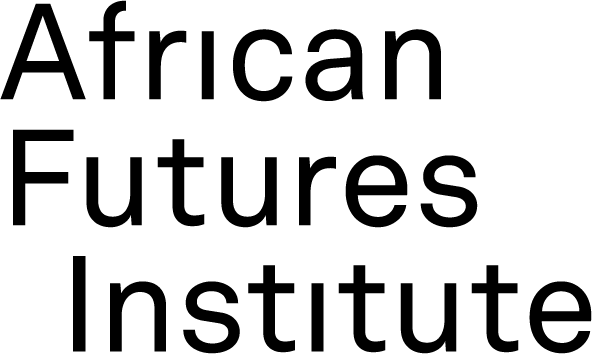At ‘our’ table are academics/practitioners working in Dublin; emerging researcher-practitioners working in Accra, Dakar, Lagos and London; practitioner-writers working in Accra; practitioner-academics working in Johannesburg, London and Oxford; graphic designers based in Johannesburg; operations managers and events coordinators in Accra; and interns, assistants and research assistants working between London, Los Angeles and Accra.
This endeavour requires a new kind of hierarchy and organisational structure, which is unfolding over time and across space, both virtual and real. With so much time spent on Zoom or in our respective offices and bedrooms, we miss getting to know one another in the way that a good dinner party or social event can do. We invite you to join us at our well-laid digital table, getting to know us better through the means we have at our disposal.
Bon appétit, or as we say in Ghana, ‘you are invited.’
Sennett, R., Together: The Rituals, Pleasures and Politics of Cooperation, London: Penguin, 2012, p5
Sunwoo, I., ‘From the “Well-Laid Table” to the “Market Place:” The Architectural Association Unit System’, Journal of Architectural Education, vol 65, Issue 2, March 2012. [O]
https://onlinelibrary.wiley.com/doi/abs/10.1111/j.1531-314X.2011.01196.x
The sociologist Richard Sennett describes cooperation as ‘an exchange in which the participants benefit from the encounter. This behaviour is instantly recognisable in children building a sandcastle or men and women laying sandbags against an impending flood. Instantly recognisable because mutual support is built into the genes of all social animals; they cooperate to accomplish what they can’t do alone.’
All human endeavour carries risk and reward. Although it sounds beneficial, cooperation can slide into collusion and competition just as easily and quickly as it builds community. Genuine cooperation, as Sennett describes it, ‘is difficult and demanding; it tries to join people who have separate or conflicting interests; who are unequal or who simply do not understand one another. The challenge is to respond to others on their own terms.’
Since 2022, the AFI has been engaged in a challenging and unusual period of intense collaboration between different groups of people located in different places in the world. Born out of necessity during the global pandemic, we’ve quickly become accustomed to this new way of working, yet at the same time, have had to develop new techniques and strategies to ensure meaningful cooperation. We are reminded of architectural educator Alvin Boyarsky’s concept of the school of architecture as a ‘well-laid table’, his metaphor for an educational model that confronts diversity and divergency head-on.
The Well-Laid Table
Table Companions
Exhibition Team
In a first set of encounters, working closely alongside Professor Lesley Lokko OBE in her curatorial and exhibition work, are architects/educators Emmett Scanlon, Alice Clancy and Laurence Lord, based in Ireland. At the heart of each of their practices is a deep appreciation for different modes of collaboration. To sit at this team’s ‘well-laid table’ and hear more about how they work. >
At ‘our’ table are academics/practitioners working in Dublin; emerging researcher-practitioners working in Accra, Dakar, Lagos and London; practitioner-writers working in Accra; practitioner-academics working in Johannesburg, London and Oxford; graphic designers based in Johannesburg; operations managers and events coordinators in Accra; and interns, assistants and research assistants working between London, Los Angeles and Accra.
This endeavour requires a new kind of hierarchy and organisational structure, which is unfolding over time and across space, both virtual and real. With so much time spent on Zoom or in our respective offices and bedrooms, we miss getting to know one another in the way that a good dinner party or social event can do. We invite you to join us at our well-laid digital table, getting to know us better through the means we have at our disposal.
Bon appétit, or as we say in Ghana, ‘you are invited.’
The sociologist Richard Sennett describes cooperation as ‘an exchange in which the participants benefit from the encounter. This behaviour is instantly recognisable in children building a sandcastle or men and women laying sandbags against an impending flood. Instantly recognisable because mutual support is built into the genes of all social animals; they cooperate to accomplish what they can’t do alone.’
All human endeavour carries risk and reward. Although it sounds beneficial, cooperation can slide into collusion and competition just as easily and quickly as it builds community. Genuine cooperation, as Sennett describes it, ‘is difficult and demanding; it tries to join people who have separate or conflicting interests; who are unequal or who simply do not understand one another. The challenge is to respond to others on their own terms.’
Since 2022, the AFI has been engaged in a challenging and unusual period of intense collaboration between different groups of people located in different places in the world. Born out of necessity during the global pandemic, we’ve quickly become accustomed to this new way of working, yet at the same time, have had to develop new techniques and strategies to ensure meaningful cooperation. We are reminded of architectural educator Alvin Boyarsky’s concept of the school of architecture as a ‘well-laid table’, his metaphor for an educational model that confronts diversity and divergency head-on.
The Well-Laid Table
Table Companions
Research Team
The AFI Research Team, an eight-person strong team of young architects and graduates who also write, teach, and curate, each write on an assigned topic, ranging from ideas On Collaboration to On Mapping. Read the second volume of the Well-Laid Table here. >
Exhibition Team
In a first set of encounters, working closely alongside Professor Lesley Lokko OBE in her curatorial and exhibition work, are architects/educators Emmett Scanlon, Alice Clancy and Laurence Lord, based in Ireland. At the heart of each of their practices is a deep appreciation for different modes of collaboration. To sit at this team’s ‘well-laid table’ and hear more about how they work. >



